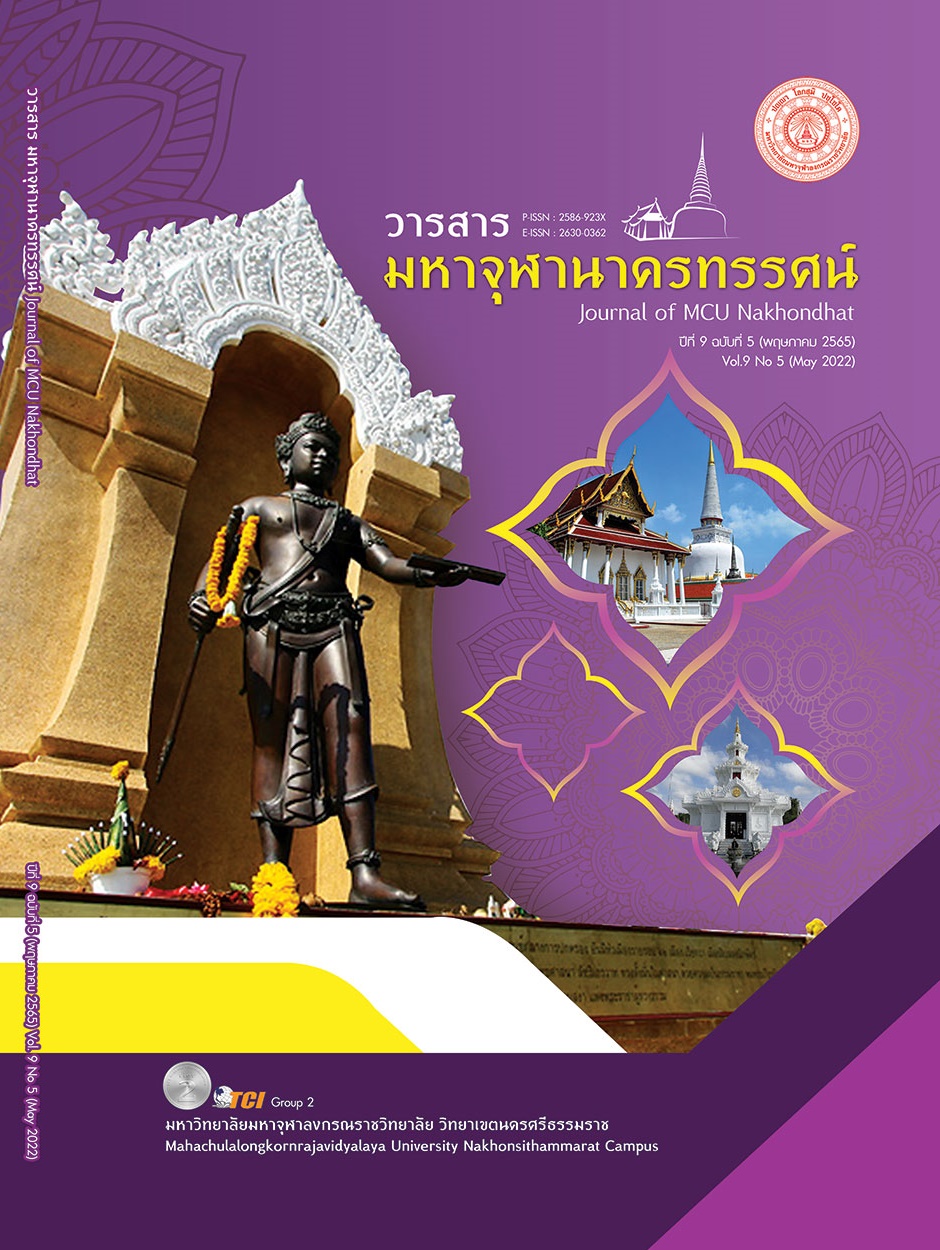THE SERMON THRONE IN THAILAND: MEANING, HISTORY, FUNCTION AND STYLE
Main Article Content
Abstract
This article focuses on the study of the meaning, function and history of ancient sermon throne usage in Thailand. The sermon throne or pulpit is a sacred seat for monks to teach the Dharma. In a deeper sense, it can be said that it is the significant throne of the Dharma. which clearly stated in the Tipitaka that When a certain monk starts to preach, he must be at a higher level than the listener. Therefore, Buddhist in several region eventually practiced the tradition to give honor to the Dharma as a sacred taught of Buddha, they also elaborated and made more complex construction of the pulpit by Using the same style as the royal throne of the secular monarch which demonstrated in difference styles according to each culture of their own community. In Thailand, Buddhist believes that the ancient pulpit might have been appeared since the Dvaravati culture which has clearly influenced from India continental and later, successively in the Sukhothai period, which is evidenced in some inscriptions. From the Ayutthaya and Rattanakosin periods, there are numerous evidences of the pulpit's using and also appearance of various traditions of Dharma preaching on the pulpit. In the Central region, Dharma was preached by the Monk in the sermon hall (Sala-Karnparian) similarly to the Northeastern region where there usually were constructions of "Hor Jak" (Hall of the alms bowl) and here pulpits were created with varieties of forms. Unlike in northern and northeastern, in southern region, there was an additional tradition of Dharma preaching in the Gallery terrace. In the Northern region, the pulpits were always placed on the right of the main Buddha image inside the Viharn, and were designed to disperse louder sounds
Article Details

This work is licensed under a Creative Commons Attribution-NonCommercial-NoDerivatives 4.0 International License.
References
กรมศิลปากร. (2548). ประชุมจารึกภาคที่ 8 จารึกสุโขทัย. (พิมพ์ครั้งที่ 1). กรุงเทพฯ : ศิลปากร.
น. ณ ปากน้ำ. (2543). ธรรมาสน์ ศักดิ์และศรีแห่งศิลปะไทย. (พิมพ์ครั้งที่ 1). กรุงเทพฯ : เมืองโบราณ.
มหาวิทยาลัยมหามกุฏราชวิทยาลัย, (2525). พระไตรปิฎกฉบับภาษาไทย ฉบับมหามงกุฎราชวิทยาลัย. กรุงเทพฯ : โรงพิมพ์มหามกุฏราชวิทยาลัย.
พระมหาจรัญ ยาวินัน. (2549). ธรรมาสน์พื้นเมืองล้านนาในจังหวัดลำปาง. ใน วิทยานิพนธ์ศิลปศาสตรมหาบัณฑิต สาขาวิชาประวัติศาสตร์ศิลปะ. กรุงเทพมหานคร : มหาวิทยาลัยศิลปากร.
ศักดิ์ชัย สายสิงห์. (2556). พระพุทธรูปในประเทศไทย รูปแบบ พัฒนาการ และความเชื่อของคนไทย, (พิมพ์ครั้งที่ 1) . กรุงเทพฯ : สำนักพิมพ์สมาพันธ์.
เสถียรโกเศศ. (2505). สดุดีเด็ก ๆ และสังเค็ด. กรุงเทพมหานคร.
แสง มนวิทูร. (2514). คัมภีร์ลลิตวิสตระ พระพุทธประวัติฝ่ายมหายาน ตอน 2. (พิมพ์ครั้งที่ 1). กรุงเทพฯ : กรมศิลปากร.
ยิ้ม ปัณฑยางกูร. (2528). งานพระเมรุมาศสมัยกรุงรัตนโกสินทร์. (พิมพ์ครั้งที่ 1) กรุงเทพฯ : อมรินทร์การพิมพ์.
Tamil Guardian. (2017). Sri Lankan soldier turned Buddhist monk in Jaffna to preach to troops . Retrieved October 15, 2021 from https://www. tamilguardian.com/content/sri-lankan-soldier-turned-buddhist-monkjaff na%C2%A0-preach-troops.


